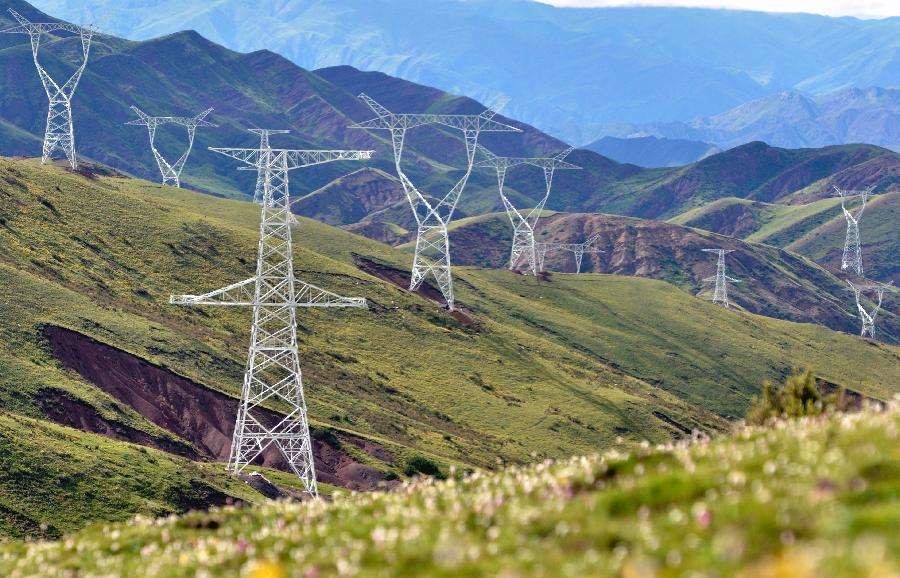




In the first nine months of this year, new orders received by Chinese shipbuilders accounted for 58.3% of the world market share, and orders in the hands of shipyards also accounted for 48.3% of the global share, ranking first in the world.

12-4-20 The world’s highest power transmission and transformation project at over 4,300 meters above sea level became fully operational in Tibet on Fri. This marked the completion of electric power coverage in Tibet and also in the Chinese mainland.


The US trade deficit with China increased by $2.2b to $26.5b in October, making China the economy with which it has the largest trade deficit, at nearly twice the deficit of the US with the EU of $15.7b.

China replacing the US to become largest trade partner of the EU in Q3 is good news for both China and the EU, reflecting resilience and potential bilateral economic and trade relationship.



The invitations for one of the events in mid-December went out to 900 people and the invite for another went to the 180 foreign ambassadors in the US.
State Department officials are hosting a holiday reception at the State Department or Blair House, which is near the White House, almost every day over the next few weeks, two sources familiar with the planned gatherings said. President Donald Trump’s own hosting of events is causing Pompeo to feel enabled to do the same.
Living it up to the going-away party.

The United Kingdom’s Office for National Statistics (ONS) data show that the country’s imports of goods from China in the second quarter of 2020 exceeded those of all other countries for the first time in size.

零售商们欢欣鼓舞!对于正当程序,没有更多捷径可走——特朗普的选举失利正慢慢得到承认,贸易顾问彼得·纳瓦罗的“特朗普时间”已经不多了。罗纳德·里根曾问选民其日子是否比四年前好过了,老实说,如果你在零售或制造部门工作,今天这些部门的工作岗位减少了,而你的生意或许已经全部乱套了!
特朗普喜欢宣扬有关贸易和国际投资的成功故事。但许多所谓的胜利转眼就化作泡影。
试图在今年首场大选辩论中宣布又一个胜利的特朗普在谈到制造业时说:“我夺回了70万个工作岗位。他们(奥巴马和拜登)什么也没拿回来。”
一些简单的研究显示,特朗普团队本来可以实现大约45万个制造业岗位的正常增长,但由于疫情影响,其任期将以制造业部门工作岗位的净损失收尾。
当然,对华贸易问题会继续对美国零售业和品牌界产生直接影响,服装部门尤其受到严重打击。回想起来,加征关税是正确的做法吗?同中国的第一阶段协议成功了吗?特朗普所有的国际贸易戏码都是美国的胜利吗?
11月15日,中国完成了被称为《区域全面经济伙伴关系协定》(RCEP)的大型贸易协议,该协定涵盖了约30%的世界人口和约30%的全球GDP。RCEP包括15个国家,预计将对该地区交易的约65%的产品取消关税和配额。毫无疑问,这是一件大事。
在特朗普首次竞选期间,彼得·纳瓦罗担任经济和贸易顾问,他之后正式加入特朗普政府。纳瓦罗不喜欢中国。纳瓦罗也不支持奥巴马政府创建的跨太平洋伙伴关系协定(TPP),他可能曾在特朗普首次竞选期间鼓励特朗普批评它。
刚刚入主椭圆形办公室,特朗普就(以戏剧性的方式)撕毁了TPP。他的行为非常唐突,根本无视多年的谈判和十余次正式会议。更重要的是,该协定本会大大有助于美国成为亚太地区的重要利益攸关方。
特朗普放弃TPP时,时任美国贸易代表的迈克尔·弗罗曼说:“毫无疑问,此举将被视为中国的巨大胜利。”
纳瓦罗用“致命”这个词来制造新闻。他的唯一目的就是耸人听闻,以煽动和加剧对华贸易战。
这种做法背后的最初想法是增加我们对中国的出口,减少我们的进口。这会调整贸易逆差,而贸易逆差正是特朗普执政时期广受关注的问题。在这一具体工作上,我们完全失败了。对结果的事实核查显示,在特朗普政府执政的每一年里,我们对中国的出口都在下降。看来彼得·纳瓦罗鼓励的贸易政策并不奏效。
纳瓦罗和特朗普将很快离任,他们认为自己正在走向成功。他们很可能会把故事稍微扭曲一下,或者用传奇橄榄球教练文斯·隆巴尔迪的话来说:“我们没有输掉比赛,只是耗尽了时间。”
